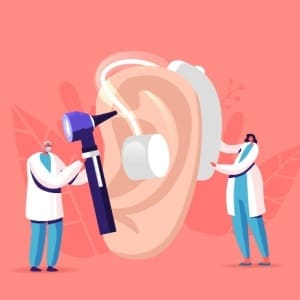Let’s Talk About Hearing Loss: Your Guide to Types, Getting Help, and Paying for It

Hearing loss is when you can’t hear as well as you used to. It can happen to anyone, no matter how old they are, and it can make everyday things harder. In the past, hearing aids were too expensive for lots of people. But good news! Now, you can buy hearing aids without a prescription, and they don’t cost as much.
Here’s more information about hearing loss, why it happens, and how you can get help, including how to pay less for hearing aids.
Different Kinds of Hearing Loss
- Conductive: This is when something blocks sound in your ear.
- Sensorineural: This happens when there’s a problem inside your ear or with the nerve that helps you hear.
- Mixed: This is a mix of conductive and sensorineural hearing loss.
- Auditory Neuropathy Spectrum Disorder: This is when your ear hears sounds, but your brain can’t understand them right.
Why People Lose Their Hearing
- Ear infections that keep coming back.
- It runs in the family.
- Getting sick with certain viruses.
- Holes in the eardrum.
- Getting older.
- Loud noises.
- Some medicines.
Ways to Help with Hearing Loss
- Hearing Aids – These make sounds louder.
- TV Captioning: This shows you the words people are saying on TV.
- TTY Typewriters – These turn what people say on the phone into text.
More About Hearing Aids
Hearing experts called audiologists can find the best hearing aid for you. These used to be really pricey because of all the work that goes into making them and you didn’t get much help from insurance. But now, thanks to new government regulations, you can get them at places like Walmart and Best Buy for about $200. Plus, you can use your FSA, HRA, or HSA to help pay for them!
However, there’s good news on that front!
The U.S. Food and Drug Administration (FDA) recently enacted new regulations to make a category of high-quality hearing aids available over the counter (OTC – without prescription) at retailers like Walmart and Best Buy. Better yet, prices start as low as about $200. Remember to use your FSA, HRA, or HSA reimbursement account to help cover the cost.
Other Tools for Hearing
Sometimes, hearing aids aren’t enough. If you’re watching TV or talking on the phone, you might need extra help. Many TVs let you see the words on the screen, and if yours doesn’t, you can get a special tool that does that. For phones, there are devices that can help you read what’s being said, and you can use your FSA or HSA funds for these too.
If Hearing Aids Aren’t Enough
If these tools don’t fix the problem, you might need medicine or even surgery. Fortunately, your FSA, HRA, or HSA can also help with those costs.
